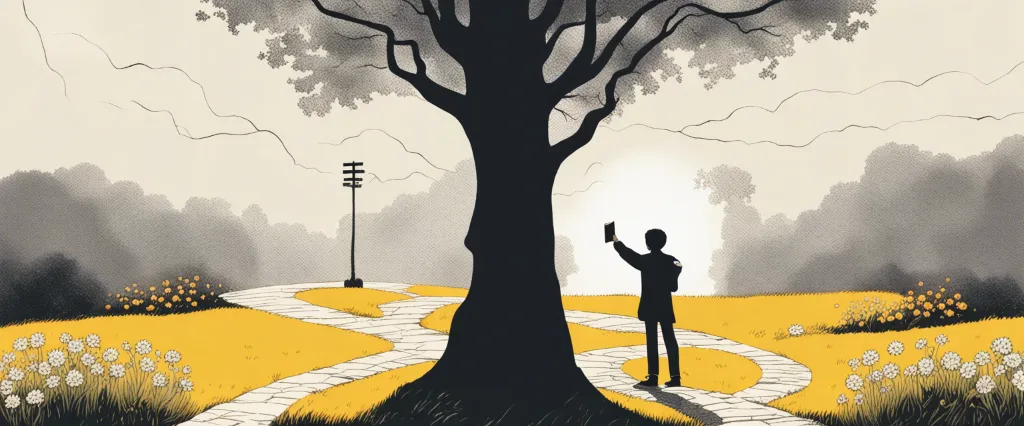Most Dangerous: A Thrilling Tale of Espionage and Courage
Chapter 1 What's Most Dangerous by Steve Sheinkin
"Most Dangerous: Daniel Ellsberg and the Secret History of the Vietnam War" by Steve Sheinkin is a gripping nonfiction narrative that chronicles the life of Daniel Ellsberg, the whistleblower behind the Pentagon Papers. The book delves into Ellsberg's transformation from a military analyst to a fierce critic of the Vietnam War, showcasing the moral dilemmas he faced in deciding to leak classified documents that revealed the U.S. government's misinformation about the war's progress. Sheinkin artfully combines historical events with personal anecdotes, highlighting themes of courage, integrity, and the impact of one individual's actions on public opinion and government accountability. The narrative serves as a powerful reminder of the importance of transparency and the cost of war.
Chapter 2 Most Dangerous by Steve Sheinkin Summary
"Most Dangerous: Daniel Ellsberg and the Secret History of the Vietnam War" by Steve Sheinkin tells the story of Daniel Ellsberg, a former military analyst who became a whistleblower during the Vietnam War. The book illustrates Ellsberg's journey from a military insider to a prominent anti-war figure after he leaked the Pentagon Papers, a classified collection of documents that revealed the U.S. government's deception about the Vietnam War.
The narrative covers the early years of Ellsberg’s life, his background in the military and academia, and his growing disillusionment with the war as he witnessed the disparity between official reports and the reality on the ground. It details the covert operations and political maneuvers that perpetuated the conflict, along with the ethical dilemmas faced by those involved.
As he grapples with his conscience, Ellsberg ultimately decides to disclose the Pentagon Papers to the public, believing that Americans have a right to know the truth about the war. The book highlights the consequences of his actions, including legal battles and the intense public attention that followed, while also exploring themes of moral responsibility, the role of government accountability, and the power of information.
Steve Sheinkin’s work is characterized by a fast-paced writing style and extensive research, making complex historical events accessible to younger audiences while also offering a reflective look at the challenges of truth-telling in times of conflict. "Most Dangerous" not only recounts Ellsberg's pivotal role in the Vietnam War era but also serves as a commentary on the importance of transparency and the responsibilities of citizens in a democratic society.
most-dangerous
Chapter 3 Most Dangerous Author
Steve Sheinkin is an American author known for his engaging nonfiction books aimed at young readers. He has a background in both history and education, which contributes to his ability to present historical events in a compelling manner. "Most Dangerous: Daniel Ellsberg and the Secret History of the Vietnam War," one of his most well-known works, was released in 2015. This book tells the story of Daniel Ellsberg, the whistleblower who leaked the Pentagon Papers, challenging the U.S. government's stance on the Vietnam War.
In addition to "Most Dangerous," Sheinkin has written several other notable books, including:
1. "Bomb: The Race to Build—and Steal—the World’s Most Dangerous Weapon" (2012) - This book covers the development of the atomic bomb during World War II and won multiple awards, including the Boston Globe-Horn Book Award.
2. "The Notorious Benedict Arnold: A True Story of Adventure, Heroism, & Treachery" (2010) - This biography presents the life and betrayal of Benedict Arnold during the American Revolution, and it also received critical acclaim.
3. "Falcon's Fury: The True Story of the Siege of the Alamo" (2016) - A narrative detailing the historical events of the Alamo siege.
4. "Wright & Lee: The Murders of the Kentucky Kentuckians" (2020) - This work focuses on a crime mystery case that captivated the nation.
In terms of popularity and critical acclaim, "Bomb" is often regarded as one of his best works, having received numerous accolades and being particularly well-received for its engaging storytelling and educational value. Each of his books tends to be highly regarded, but "Most Dangerous" and "Bomb" stand out as significant contributions to young adult nonfiction literature.
For the best edition, while all of Sheinkin's works have been well-received, "Bomb" is often highlighted for its comprehensive narrative and depth of research, making it particularly noteworthy in terms of editions and reader interest.
Chapter 4 Most Dangerous Meaning & Theme
Most Dangerous Meaning
"Most Dangerous" by Steve Sheinkin is a historical narrative that explores the life of the notorious figure Robert Oppenheimer and the development of the atomic bomb during World War II. The book tells the story of the Manhattan Project and delves into the moral and ethical dilemmas faced by the scientists involved, particularly Oppenheimer, who grapples with the consequences of his work.
The meaning of "Most Dangerous" extends beyond just the historical account; it raises questions about the nature of scientific responsibility, the impact of technological advancements on society, and the profound implications of wielding unprecedented destructive power. Sheinkin emphasizes the tension between scientific discovery and moral responsibility, making readers reflect on the potential consequences of human innovation when it intersects with warfare.
Through its narrative, the book invites readers to consider the darker aspects of human ambition and creativity, along with the responsibilities that come with knowledge and power. Overall, "Most Dangerous" serves as a cautionary tale about the perils of scientific progress without ethical consideration.
Most Dangerous Theme
"Most Dangerous: Daniel Ellsberg and the Secret History of the Vietnam War" by Steve Sheinkin explores several key themes, including:
1. The Ethics of Dissent: The book delves into the moral implications of whistleblowing and the right to question authority. Daniel Ellsberg's decision to leak the Pentagon Papers raises questions about loyalty to government versus loyalty to truth and the public.
2. The Consequences of War: It provides a critical examination of the Vietnam War, highlighting the human cost and the impact of government decisions on individuals and society. Through Ellsberg's perspective, the narrative critiques the justifications for war and the consequences of military actions.
3. The Role of Government Transparency: Sheinkin emphasizes the importance of transparency in government operations and the public's right to know. The disclosure of classified information serves as a catalyst for public debate about the war and government accountability.
4. Courage and Conviction: Ellsberg’s journey reflects themes of personal courage and conviction. His willingness to risk his career and freedom for his beliefs underscores the power of individual agency in standing against systemic injustice.
5. Media and Public Perception: The book illustrates how media plays a crucial role in shaping public opinion and bringing issues to light. The relationship between journalism and democracy is a core component of the narrative, emphasizing the necessity of a free press.
These themes contribute to a deeper understanding of the moral and ethical dilemmas surrounding war, governance, and individual responsibility in a democratic society.
most-dangerous
Chapter 5 Quotes of Most Dangerous
Most Dangerous quotes as follows:
"Most Dangerous: Daniel Ellsberg and the Secret History of the Vietnam War" by Steve Sheinkin is a compelling account of Daniel Ellsberg's role in the release of the Pentagon Papers and the broader implications of his actions. Here are some significant themes and quotes from the book:
1. Secrecy and Truth: Ellsberg's journey emphasizes the tension between government secrecy and the public's right to know.
- "The truth is rarely pure and never simple."
2. Courage and Conscience: The moral dilemmas faced by Ellsberg highlight the concept of civil disobedience.
- “To be brave is to do what you must do, regardless of fear.”
3. The Cost of War: The devastation and human cost of the Vietnam War are central to Ellsberg's motivations.
- "The more you learn about war, the more horror you find."
4. Government Accountability: The impact of Ellsberg's actions raised critical questions about the accountability of government officials.
- "When the government is wrong, it’s our duty to speak out."
5. Personal Risk: Ellsberg risked everything by leaking the Pentagon Papers, reflecting the personal stakes in the fight for transparency.
- “Sometimes the hardest thing to do is the right thing.”
6. The Role of Whistleblowers: The importance of whistleblowers in democracy is a recurring theme.
- "A whistleblower is a messenger; they can't be shot for delivering the news."
7. The Power of Information: The differential power struggle between the government and its citizens is underscored by Ellsberg’s story.
- "Information is power, and it can either bind us or liberate us."
8. Legacy of the Vietnam War: The lasting implications of the Vietnam War and how it shaped public perception of government honesty.
- "History has a way of repeating itself, especially when we ignore the lessons of the past."
9. Moral Responsibility: Ellsberg wrestles with the ethical implications of his choices regarding the truth.
- "You can’t sit idly by when you see something so unjust.”
10. Public Perception: How public opinion shifted in the wake of the Pentagon Papers and what it meant for accountability.
- "Public trust in the government was shattered, but the fight for justice lived on."
If you are looking for specific passages or more detailed commentary on any themes, feel free to ask!
Chapter 6 Similar Books Like Most Dangerous
Sure! Here are five book recommendations that offer thrilling narratives, intricate plots, and engaging character development, similar to the intensity found in "Most Dangerous":
1. "The Spy Who Came in from the Cold" by John le Carré
This Cold War classic follows Alec Leamas, a disillusioned British spy, as he is sent on a mission to bring down a East German intelligence officer. The novel delves into themes of betrayal, morality, and the psychological toll of espionage, providing a gripping and realistic portrayal of the spy genre.
2. "American Spy" by Lauren Wilkinson
Set during the Cold War, this novel tells the story of Marie Mitchell, an African American woman who becomes a spy for the U.S. government. Through her experiences, the book explores race, identity, and the complexities of espionage, blending historical events with a personal narrative full of twists and turns.
3. "I Am Pilgrim" by Terry Hayes
This fast-paced thriller follows an ex-CIA agent known as Pilgrim as he tries to unravel a complex terror plot. With an intricate narrative that spans multiple continents and timelines, this book combines elements of espionage, crime, and a race against time, making it a page-turner from start to finish.
4. "The Hunt for Red October" by Tom Clancy
A thrilling military espionage tale about a Soviet submarine captain who wishes to defect to the United States with his state-of-the-art submarine. Clancy's meticulous attention to detail and deep understanding of military operations bring authenticity to this gripping story of cat-and-mouse tactics in the Cold War.
5. "The Silent Patient" by Alex Michaelides
Though it strays from the traditional spy genre, this psychological thriller presents a mysterious narrative filled with suspense and psychological intrigue. The story revolves around Alicia Berenson, a woman who stops speaking after committing a shocking act. A psychotherapist becomes obsessed with uncovering her motives, leading to unexpected twists and revelations.
These five books provide a mix of thrilling suspense, psychological depth, and intricate plots, ensuring readers will be captivated throughout. Enjoy your reading!
most-dangerous
Book https://www.bookey.app/book/most-dangerous
Author https://www.bookey.app/book/most-dangerous#Author
Quotes https://www.bookey.app/book/most-dangerous/quote
The Call of the Wild https://www.bookey.app/book/the-call-of-the-wild
Youtube https://www.youtube.com/watch?v=uK-0l_FLFe4
Amazon https://www.amazon.com/Most-Dangerous-Ellsberg-History-Nonfiction/dp/1596439521
Goodreads https://www.goodreads.com/book/show/23310694-most-dangerous


